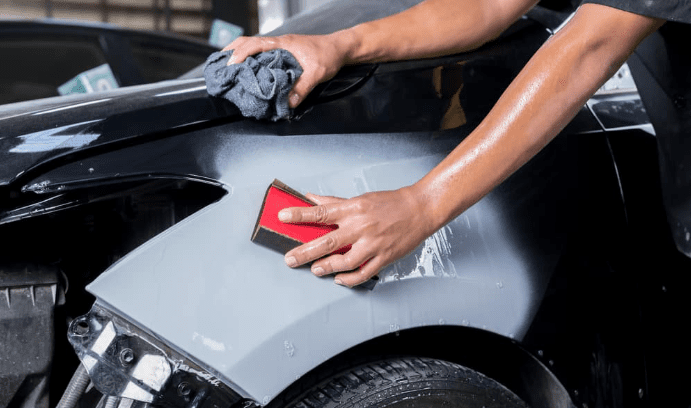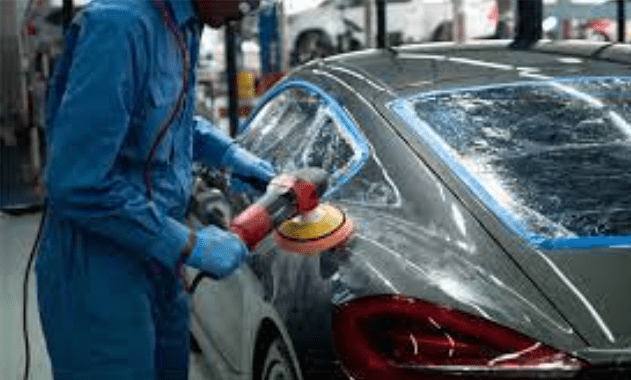In the dynamic world of automotive repair, having the right tools is not just a necessity but a game-changer. When it comes to collision repair tools, precision and efficiency are paramount. In this comprehensive guide, we delve into the diverse array of tools essential for collision repair, ensuring that repair professionals and enthusiasts alike are equipped for excellence.
Understanding Collision Repair Tools
1. Dent Pullers
Dent pullers are the unsung heroes of collision repair. These tools come in various forms, from manual slide hammers to hydraulic dent pullers, enabling technicians to extract dents with precision.
2. Frame Straightening Equipment
In the aftermath of a collision, a vehicle’s frame may require straightening. Frame straightening equipment, including frame racks and alignment machines, is crucial for restoring a vehicle’s structural integrity.
3. Welding Tools
Welding plays a pivotal role in collision repair. MIG welders, spot welders, and plasma cutters are indispensable for seamlessly joining and repairing metal components.
4. Painting Tools
Achieving a flawless finish is an art, and painting tools are the artist’s brushes. Spray guns, paint booths, and sanders contribute to the precision and quality of the final paint job.
5. Diagnostic Equipment
In the era of advanced vehicle technology, diagnostic tools are indispensable. OBD scanners and computerized diagnostic equipment aid in identifying and rectifying issues post-collision.
6. Air Tools
Air tools, including impact wrenches and grinders, offer the power and speed needed for efficient disassembly and reassembly during collision repairs.
7. Measuring Systems
Accurate measurements are the foundation of successful repairs. Laser and digital measuring systems ensure precision in assessing and restoring a vehicle’s dimensions.
8. Panel Beating Tools
For reshaping and molding damaged panels, panel-beating tools such as hammers, dollies, and mallets are essential. These tools allow technicians to delicately work on the contours of a vehicle.
9. Protective Gear
Safety is non-negotiable in collision repair. Protective gear, including gloves, goggles, and respirators, shields technicians from potential hazards during the repair process.

Choosing the Right Collision Repair Tools
1. Quality Over Quantity
While the market is flooded with options, prioritizing quality over quantity is crucial. Investing in high-quality tools may seem expensive initially, but it pays off in precision and durability.
2. Tool Compatibility
Ensuring that your tools are compatible with a variety of vehicle makes and models is essential for versatility in collision repair.
3. Ergonomics
The comfort and ergonomics of the tools cannot be overlooked. Tools designed for ease of use contribute to the efficiency of the repair process.
Advancements in Collision Repair Technology
As technology evolves, so do collision repair tools. The integration of artificial intelligence, robotics, and augmented reality is revolutionizing the way professionals approach repairs. These advancements enhance accuracy, speed, and overall repair quality, setting a new standard in the collision repair industry.
The Future of Collision Repair Tools
The landscape of collision repair tools continues to evolve with an emphasis on sustainability, efficiency, and digital integration. As electric vehicles become more prevalent, tools designed for their unique repair requirements are anticipated to take center stage.
What tools are used in collision repair?
Collision repair encompasses a range of tools essential for various tasks. Some key tools include dent pullers, frame straightening equipment, welding tools (MIG welders, spot welders), painting tools (spray guns, sanders), diagnostic equipment (OBD scanners), air tools (impact wrenches, grinders), measuring systems (laser, digital), and protective gear (gloves, goggles). These tools ensure precision, efficiency, and safety throughout the collision repair process.
What is collision repair?
Collision repair refers to the process of restoring a vehicle to its pre-accident condition after it has sustained damage from a collision or accident.
This comprehensive repair involves addressing structural, mechanical, and cosmetic issues to ensure the vehicle’s safety, functionality, and appearance are restored. Skilled technicians use various tools and techniques to assess, repair, and replace damaged components, ranging from dent removal to frame straightening and painting, ultimately returning the vehicle to a roadworthy state.
What is the definition of collision repair procedures?
Collision repair procedures encompass a set of systematic steps and methods followed by automotive technicians to restore a vehicle damaged in a collision to its pre-accident condition. These procedures involve a detailed assessment of the damage, identification of necessary repairs, and the application of specific techniques, tools, and materials to address structural, mechanical, and cosmetic issues. The goal is to ensure the vehicle’s safety, functionality, and appearance are reinstated following industry standards and manufacturer specifications.

Contact Us For Collision Repair In Houston TX
For top-notch collision repair services in Houston, TX, contact us today. Our skilled technicians at Westside Collision Center are dedicated to restoring your vehicle to its pre-accident condition.
With a commitment to quality and customer satisfaction, we provide comprehensive collision repair services. Call or email us to schedule an appointment and experience excellence in automotive repair. Your satisfaction is our priority at our center.
In Conclusion
Equipping yourself with the right collision repair tools is not just about having an impressive arsenal; it’s about ensuring precision, efficiency, and ultimately, customer satisfaction. From dent pullers to advanced diagnostic equipment, each tool plays a vital role in the intricate process of collision repair.
In the ever-evolving world of automotive repair, staying abreast of technological advancements and investing in the right tools is not just a choice; it’s a necessity. Whether you’re a seasoned professional or an aspiring enthusiast, embracing the latest in collision repair tools is the key to staying ahead in this dynamic industry.





